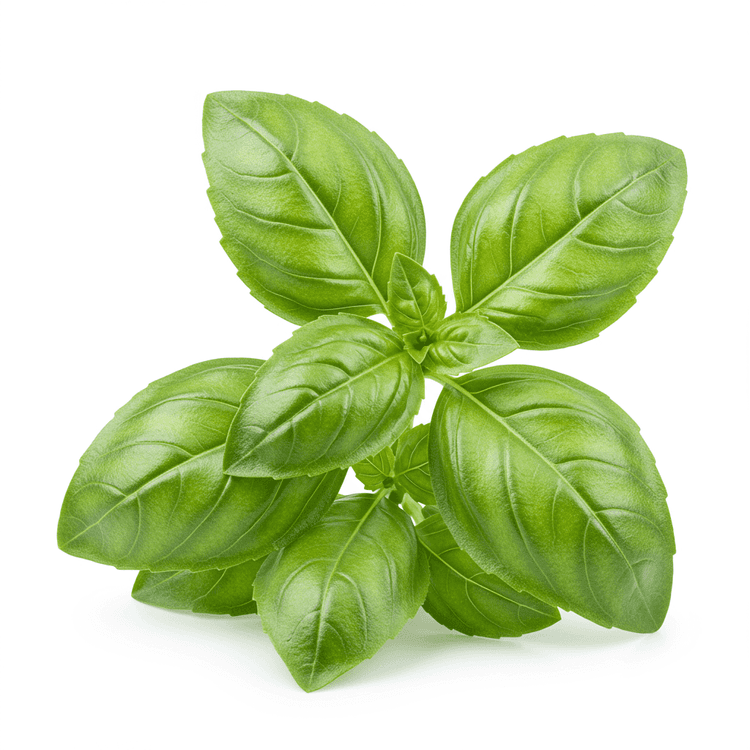
Basil
Basil is a fragrant, leafy green herb widely celebrated for its sweet, slightly peppery flavor with hints of anise and clove. Its tender leaves are vibrant green and smooth, making it a visually appealing addition to dishes. Known as a staple in Italian and Mediterranean cuisines, basil is also a key ingredient in pesto and pairs beautifully with tomatoes, garlic, and olive oil. Fresh basil leaves are highly aromatic, while dried basil has a more subdued flavor profile, making it versatile for various culinary applications.
Common Uses
- Use fresh basil leaves to make classic basil pesto by blending them with garlic, pine nuts, Parmesan cheese, and olive oil for a rich, flavorful sauce.
- Add fresh basil as a garnish to caprese salads, pizzas, or pasta dishes to enhance their aroma and taste.
- Infuse basil into oils or vinegars to create herbaceous condiments for drizzling over roasted vegetables or grilled meats.
- Incorporate basil into soups like tomato basil soup for a comforting, herbaceous flavor.
- Use dried basil as a seasoning in marinades, rubs, or sauces to add depth to roasted or grilled dishes.
- Blend basil into smoothies or cocktails, such as a basil lemonade or mojito, for a refreshing twist.
Nutrition (per serving)
Nutrition (per serving)
Calories
22.0kcal (1.1%)
Protein
3.2g (6.4%)
Carbs
2.7g (0.98%)
Sugars
0.3g (0.6%)
Healthy Fat
0.3g
Unhealthy Fat
0.0g
% Daily Value based on a 2000 calorie diet
Nutrition (per serving)
Calories
22.0kcal (1.1%)
Protein
3.2g (6.4%)
Carbs
2.7g (0.98%)
Sugars
0.3g (0.6%)
Healthy Fat
0.3g
Unhealthy Fat
0.0g
% Daily Value based on a 2000 calorie diet
Health Benefits
- Basil is rich in antioxidants, which can help support overall health and wellness.
- It adds a fresh, aromatic flavor to dishes, making it a staple in Mediterranean and Italian cuisines.
- Basil contains essential vitamins like vitamin K and vitamin A, which contribute to a balanced diet.
- It is often used in sauces, salads, and marinades, enhancing both flavor and nutritional value.
- Fresh basil is a popular ingredient in pesto, offering a vibrant taste and versatility in cooking.
- Its natural oils can elevate the flavor profile of soups, stews, and stir-fries.
Substitutes
Chefadora AI is here.
Experience smarter, stress-free cooking.
Storage Tips
Store fresh basil by wrapping the stems in a damp paper towel and placing them in a plastic bag in the refrigerator. Alternatively, you can keep the stems in a glass of water at room temperature, covering the leaves loosely with a plastic bag. For long-term storage, basil can be frozen by blending it with a little oil and storing it in ice cube trays. Dried basil should be kept in an airtight container in a cool, dark place to preserve its flavor.
Marnirni-apinthi Building, Lot Fourteen,
North Terrace, Adelaide, South Australia, 5000
Australia

